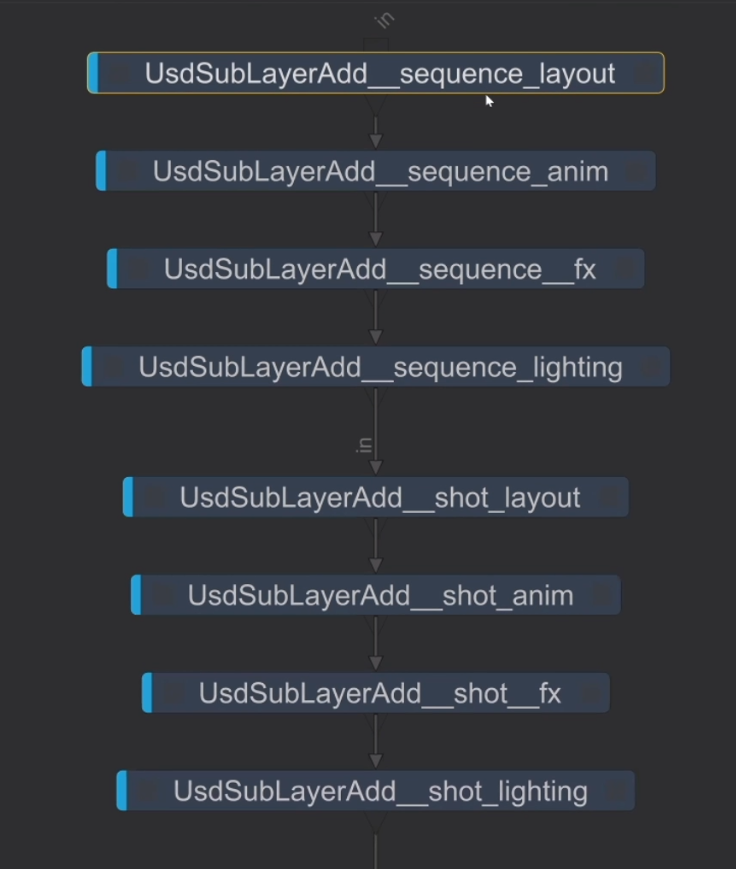UsdSubLayerAdd
A layer is a foundational element in the USD stage and is typically a file containing scene information. The file can be a .usda (ASCII) or .usdc (binary) file, though the more generic .usd extension may be used for either type.
Sublayers allow artists to build complex scenes by layering various USD files together, each one potentially containing different elements or variations of a scene. Sublayers are ordered in a stack, and they are composed together based on this order, enabling artists to manage, override, and organize scene content in a non-destructive and scalable manner.
This structuring allows for efficient collaboration across departments, as different aspects of a scene (like lighting, animation, or shading) can be worked on in parallel and then combined together cohesively.
Layers can be further broken down into sublayers, where content is organized into its parts, each stored in a separate USD file.
Example: The layers could be separated as follows:
Layout layer - Items are brought into their initial positions on the stage.
Animation layer - Allows your animation department to override any characters or props with animation data.
FX layer - FX is added to bring additional motion and life to the scene.
Lighting layer - Lights are added and any final rendering optimizations are applied.
Each of these layers can have both an entire sequence and a per-shot level version.
Layer Interaction
Layers are organized in a stack, where the topmost layer can override the data in the layers below. This enables non-destructive editing, as the data can be overridden but not lost.
Given the fact that data can be overridden, it is not absolutely certain that it will be used. Consequently, the data is known as an “opinion”. As part of scene composition, opinions are resolved to establish the data to use depending on the strength of the opinion. This strength is determined by a prescribed set of rules including layer order.
The various mechanisms that are used to combine layers and resolve data are known as the “composition arc”, which essentially determines how everything fits together to produce the final composition.
Organizing Layers
The UsdSubLayerAdd node resembles the functionality of the UsdIn node but expands its capabilities with layer separation. You can create separate sublayers like "fx," "layout," and "lighting" to organize your project into department-specific layers.

You can also divide these sublayers into additional sublayers to accommodate different versions, variants, or sequence-based effects, forming multiple branches from this structure.
Plus, sublayers offer you the flexibility to selectively choose which data to override at different points in your project.
Layering sublayers into layer stacks is especially helpful for loading root-level layers without requiring a specific prim path. This feature is useful for incorporating entire stages, or layering prims that share the same hierarchy.
Note: For more information, refer to the USD Glossary under SubLayers.
Inputs
|
Connection Type |
Connection Name |
Function |
| Input | in | The incoming scene graph data that the node will operate on or modify. |
|
Control (UI) |
Default Value |
Function |
| asset |
Loads in a file as a sublayer.
|
